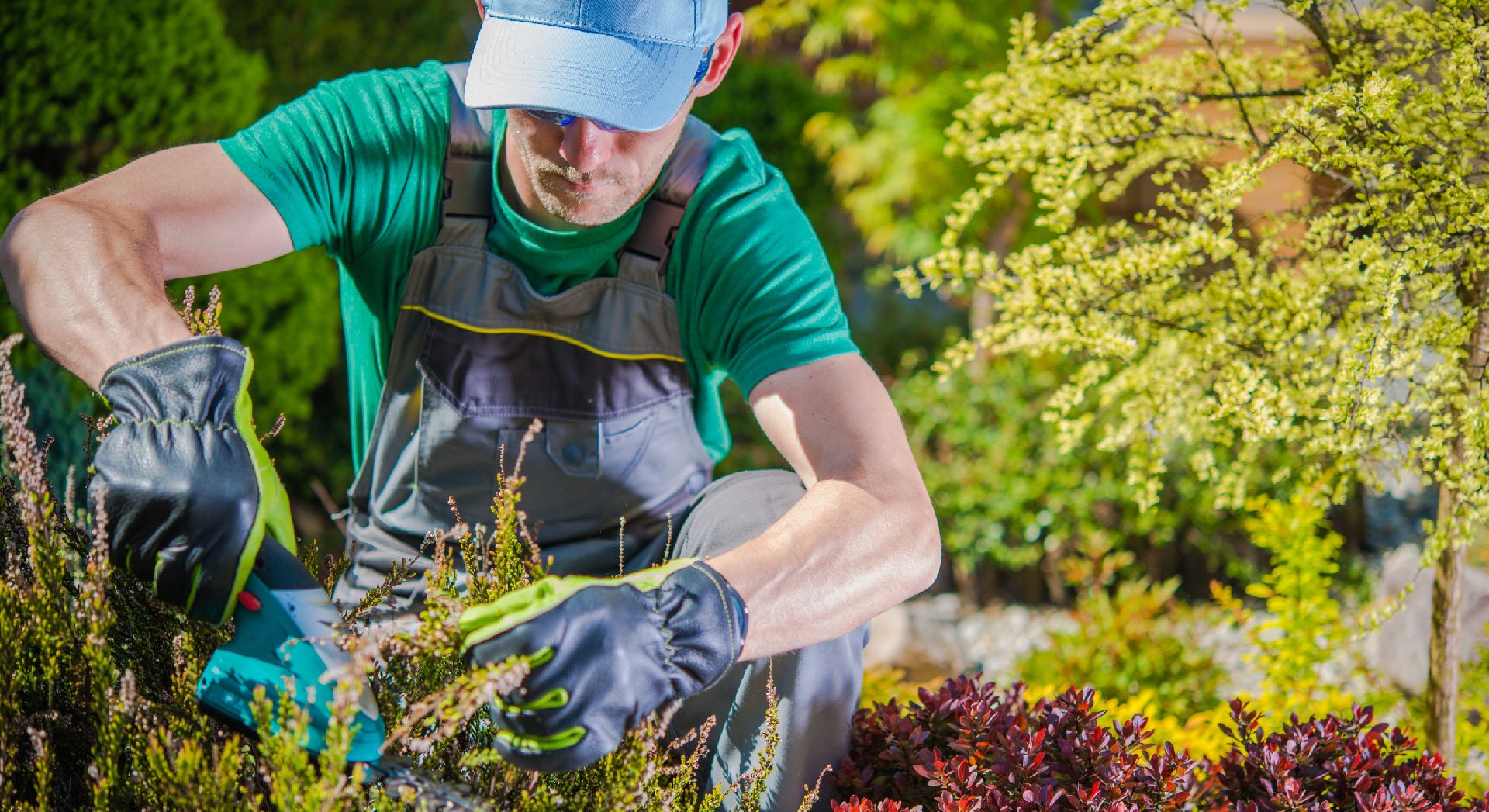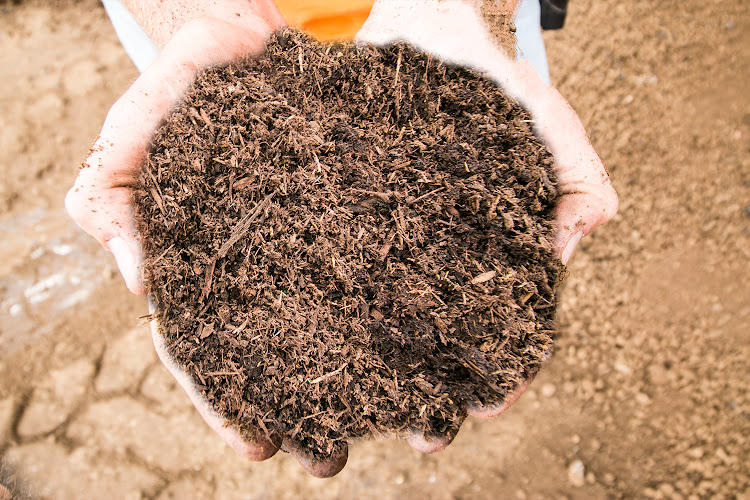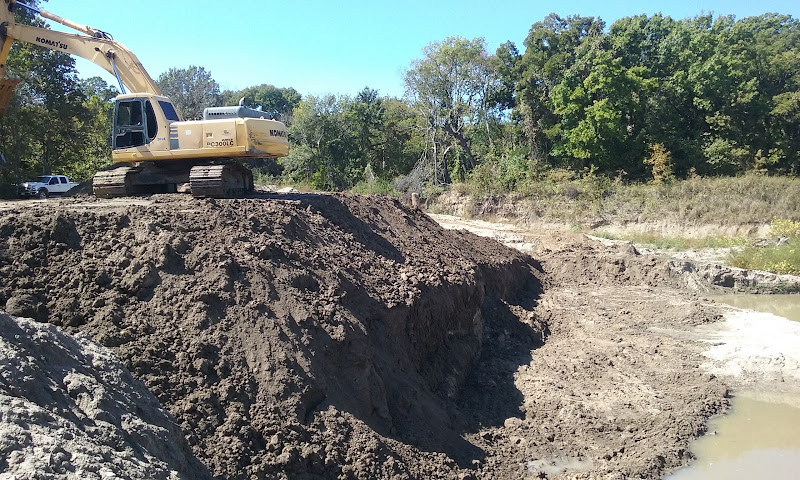Understanding Topsoil
To fully grasp the weight of a yard of topsoil, it’s important to first understand what topsoil is and its significance in gardening and landscaping.
What is Topsoil?
Topsoil refers to the uppermost layer of soil found on the Earth’s surface. It is a vital component of healthy soil and serves as the foundation for plant growth. Topsoil is typically dark in color and rich in organic matter, nutrients, and beneficial microorganisms. It acts as a reservoir for water, nutrients, and air, providing a hospitable environment for plants to thrive.
Importance of Topsoil in Gardening and Landscaping
Topsoil plays a crucial role in gardening and landscaping endeavors. Its benefits include:
- Nutrient Availability: Topsoil contains essential nutrients like nitrogen, phosphorus, and potassium, which are vital for plant growth and development. These nutrients nourish plants, ensuring they receive the necessary elements for healthy growth.
- Water Retention: The organic matter present in topsoil helps retain moisture, preventing excessive evaporation and providing a steady water supply to plant roots. This is especially important during dry periods or in regions with limited rainfall.
- Root Development: The loose and friable texture of topsoil allows plant roots to penetrate easily, facilitating root development and anchoring plants securely in the ground. This promotes healthier and more robust plants.
- Microbial Activity: Topsoil is teeming with beneficial microorganisms such as bacteria and fungi. These microorganisms break down organic matter, releasing nutrients that are then available for plant absorption. They also contribute to the overall health and fertility of the soil.
- Erosion Prevention: The presence of topsoil helps prevent erosion by acting as a protective layer against wind and water. It stabilizes the soil, reducing the risk of nutrient runoff and soil loss.
Understanding the importance of topsoil in gardening and landscaping is essential for making informed decisions when it comes to purchasing and utilizing this valuable resource. If you’re wondering about where to buy topsoil, our article on where to buy topsoil in bulk near me can provide some helpful guidance. Additionally, if you’re curious about how much topsoil you need for your project, check out our article on how much topsoil do I need for useful tips and calculations.
The Weight of a Yard of Topsoil
To accurately plan and estimate the amount of topsoil you need for your gardening or landscaping project, it’s important to understand the weight of a yard of topsoil. The weight of topsoil can vary based on several factors, and knowing these factors can help you make informed decisions.
Factors Affecting the Weight of Topsoil
The weight of topsoil can be influenced by various factors, including:
- Moisture Content: The moisture content of topsoil can significantly impact its weight. Moist soil tends to be heavier than dry soil due to the presence of water. It’s important to consider the moisture content when estimating the weight of topsoil, as it can vary depending on weather conditions and how the soil has been stored or handled.
- Soil Composition: The composition of the topsoil also plays a role in its weight. Different types of topsoil can have varying densities and compositions, which can affect their weight. Soil with a higher clay content tends to be denser and heavier compared to soil with a higher sand content.
Average Weight of a Yard of Topsoil
The average weight of a yard of topsoil is typically around 2,000 to 2,200 pounds. However, it’s important to note that this is an estimate and the actual weight can vary based on the factors mentioned above.
To give you a better understanding, here’s a table comparing the estimated weight of a yard of topsoil based on different moisture content levels:
| Moisture Content | Weight of a Yard of Topsoil |
|---|---|
| Dry (10% moisture content) | 2,000 pounds |
| Moderate (20% moisture content) | 2,100 pounds |
| Moist (30% moisture content) | 2,200 pounds |
It’s important to remember that these numbers are approximate and can vary depending on the specific conditions of the topsoil you are working with. If you’re unsure about the weight of topsoil you need for your project, you can consult a reputable supplier or use online calculators to estimate the amount based on your specific requirements. For more information on calculating the amount of topsoil needed for your project, check out our article on how much topsoil do I need?.
Understanding the weight of topsoil is essential for making informed decisions when purchasing and transporting it. By considering factors such as moisture content and soil composition, you can better estimate the weight of topsoil needed for your gardening or landscaping endeavors.
Measuring Topsoil
To determine the quantity of topsoil you need for your gardening or landscaping project, it’s important to understand how to measure it accurately. Two common methods of measurement for topsoil are cubic yard and weight. Let’s explore these methods further.
Cubic Yard Measurement
The cubic yard is a unit of volume commonly used to measure topsoil. It refers to the amount of space that can be filled by a cube with edges measuring one yard in length. One cubic yard is equal to 27 cubic feet.
When determining how much topsoil you need, you can calculate the volume in cubic yards by multiplying the length, width, and depth of the area you plan to fill with topsoil. For example, if you have a garden bed that measures 10 feet long, 5 feet wide, and you want to add topsoil 6 inches deep, the calculation would be as follows:
10 ft (length) x 5 ft (width) x (6 in (depth) / 12 in/ft) = 25 cubic feet
25 cubic feet / 27 cubic feet/cubic yard = 0.93 cubic yards (rounded to the nearest decimal)
In this case, you would need approximately 0.93 cubic yards of topsoil to fill the garden bed.
Converting Weight to Volume and Vice Versa
While cubic yard measurement is a common way to determine the amount of topsoil needed, some suppliers may provide topsoil by weight. To convert between weight and volume, you need to consider the density of the topsoil.
The density of topsoil can vary depending on factors such as moisture content and soil composition. On average, topsoil has a density of around 1.25 to 1.4 tons per cubic yard. To convert weight to volume, divide the weight of the topsoil by its density. For example, if you have 2 tons of topsoil and the average density is 1.3 tons per cubic yard, the calculation would be:
2 tons / 1.3 tons per cubic yard = 1.54 cubic yards (rounded to the nearest decimal)
Conversely, to convert volume to weight, multiply the volume in cubic yards by the density. For instance, if you have 1.5 cubic yards of topsoil and the average density is 1.35 tons per cubic yard, the calculation would be:
1.5 cubic yards x 1.35 tons per cubic yard = 2.03 tons (rounded to the nearest decimal)
Remember that the density of topsoil can vary, so it’s always a good idea to check with your supplier for the specific density of the topsoil you are purchasing.
Understanding these measurement methods can help you accurately determine the amount of topsoil you need for your project, whether you prefer cubic yard measurement or need to convert between weight and volume. For more information on topsoil and related topics, check out our articles on how much is a yard of topsoil? and where to buy topsoil in bulk near me?.
Variations in Topsoil Weight
The weight of a yard of topsoil can vary due to different factors, including moisture content and soil composition. Understanding these variations is essential when determining the weight of topsoil in different situations.
Moisture Content
Moisture content plays a significant role in the weight of topsoil. Soil that is dry or has low moisture content will generally weigh less compared to soil that is moist or has high moisture content. This is because water adds weight to the soil. When purchasing topsoil, it’s important to consider the moisture content and its impact on the weight. The moisture content can vary depending on factors such as weather conditions and storage methods.
Soil Composition
The composition of the soil also affects its weight. The weight of topsoil can vary depending on the types and ratios of substances present within it. Soil composition includes elements such as organic matter, minerals, sand, silt, and clay. Each of these components has a different density, which can impact the weight of the topsoil. For example, soil with higher clay content tends to be heavier than soil with higher sand content.
To provide a general idea of the weight of a yard of topsoil, here is an estimated range of weights based on typical conditions:
| Moisture Content | Soil Composition | Weight of a Yard of Topsoil (lbs) |
|---|---|---|
| Dry | Balanced | 2,000 – 2,200 |
| Moist | Balanced | 2,200 – 2,400 |
| Wet | Balanced | 2,400 – 2,600 |
| Dry | Clayey | 2,200 – 2,400 |
| Moist | Clayey | 2,400 – 2,600 |
| Wet | Clayey | 2,600 – 2,800 |
It’s important to note that these weights are approximate and can vary depending on specific soil conditions. To determine the weight of topsoil more accurately, it is recommended to consult with a reputable supplier or refer to their product specifications.
Understanding the variations in topsoil weight due to moisture content and soil composition is crucial when planning gardening or landscaping projects. By considering these factors, you can make informed decisions on how much topsoil you need and ensure successful results. For more information on topsoil, including where to buy it in bulk, check out our article on where to buy topsoil in bulk near me.
Buying and Transporting Topsoil
When it comes to buying and transporting topsoil, there are a few factors to consider to ensure a smooth and successful process. This section will cover two important aspects: ordering topsoil by weight or volume and tips for transporting topsoil safely.
Ordering Topsoil by Weight or Volume
When purchasing topsoil, you may have the option to order it by either weight or volume. The choice between the two depends on your specific needs and the purpose for which you require the topsoil.
Ordering topsoil by weight is often preferred for larger projects or when the topsoil needs to be transported over long distances. By knowing the weight of the topsoil, you can plan the logistics accordingly and ensure that your vehicle or equipment can handle the load. To determine the weight of topsoil needed, you can refer to our article on how much is a yard of topsoil?.
On the other hand, ordering topsoil by volume is suitable for smaller projects or when you have limited storage capacity. The volume is typically measured in cubic yards, which represents a three-dimensional space. To calculate how much topsoil you need in terms of cubic yards, you can refer to our article on how much topsoil do I need?.
Tips for Transporting Topsoil Safely
Transporting topsoil can be a challenging task, but with the right approach, it can be done safely and efficiently. Here are some tips for transporting topsoil:
- Prepare your vehicle: If you’re using a truck or trailer to transport the topsoil, make sure it is in good condition and can handle the weight. Check the tire pressure and ensure that the suspension is capable of carrying a heavy load.
- Secure the load: To prevent the topsoil from shifting during transportation, secure the load properly using straps or ropes. This will help maintain the stability of the vehicle and reduce the risk of accidents.
- Cover the load: Use a tarp or cover to protect the topsoil from wind, rain, or other elements during transport. This will help to maintain the quality of the topsoil and prevent it from drying out or becoming contaminated.
- Drive cautiously: When transporting topsoil, drive at a reasonable speed and follow all safety regulations. Be aware of the increased weight and adjust your driving accordingly, especially when braking or turning.
- Unload with care: When unloading the topsoil, exercise caution to prevent injuries or damage. Use appropriate equipment, such as a wheelbarrow or shovel, to safely transfer the topsoil to its intended location.
By following these tips, you can ensure that your topsoil is delivered and transported safely, preserving its quality and integrity throughout the process.
Understanding the process of buying and transporting topsoil is essential for a successful gardening or landscaping project. Whether you choose to order topsoil by weight or volume, and regardless of the method you use to transport it, being well-prepared and taking necessary precautions will contribute to a smooth and efficient experience.
Conclusion
Understanding the weight of topsoil is essential for anyone involved in gardening, landscaping, or any project that requires the use of this valuable resource. By knowing the weight of a yard of topsoil, you can make more informed decisions and ensure that you have the appropriate amount for your needs.
Importance of Knowing the Weight of Topsoil
Knowing how much a yard of topsoil weighs is crucial for several reasons. First and foremost, it helps you determine the quantity of topsoil you need for your project. Whether you’re looking to fill raised beds, level your lawn, or create a new garden, having an accurate estimate of the weight allows you to plan accordingly. Check out our article on how much topsoil do I need? for more information.
Additionally, understanding the weight of topsoil helps you make informed decisions when it comes to purchasing and transporting it. By knowing the weight, you can compare prices and evaluate different options based on cost-effectiveness. Our article on where to buy topsoil in bulk near me? can assist you in finding reputable suppliers near you.
Making Informed Decisions
Having knowledge about the weight of topsoil empowers you to make informed decisions about your project. Whether you’re working on a small garden or a large-scale landscaping endeavor, understanding the weight helps you plan logistics, such as how much topsoil can fit in your vehicle or how many trips you may need to make.
It’s important to note that the weight of topsoil can vary based on factors like moisture content and soil composition. By considering these variations, you can make more accurate estimates and ensure that you have the right amount of topsoil for your specific needs. For more information on topsoil and its uses, check out our article on what is topsoil used for?
In conclusion, knowing the weight of topsoil is vital for successful gardening and landscaping projects. It allows you to plan, purchase, and transport topsoil effectively, ensuring that you have the right amount for your specific needs. By making informed decisions, you can create beautiful and thriving outdoor spaces.





